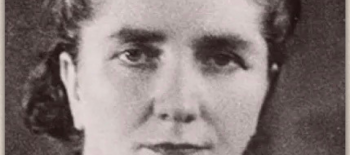The United Cuisine of the Visegrad Group: cabbage, káposzta, zelí, kapusta
Polish Cultural Institute NY would like to invite you on celebrating the Polish Presidency of the Visegrad Group (from July 2020 to June 2021) and the 30th anniversary of the establishment of the Visegrad Group in the United States. The V4 group is a regional forum for cooperation of four Central-European countries: the Czech Republic, Hungary, Slovakia and Poland, which share not only a neighborhood and similar geopolitical conditions but also common history, culture and traditions. The activities of the V4 countries focus especially on European aspects, the reinforcement of political and energy stability in the region and the promotion of the cultural community as well as cooperation in the development of education.
As a part of the United Cuisine of the Visegrad Group project, Polish Cultural Institute NY has obtained recipes from culinary experts from V4 countries: the Czech Republic (Jan Kaplan, Dvur Hoffmeister, Číčovice), Slovakia (Ludmiła Miller, Slovak Institute in Warsaw), Hungary (Angelika Árvay, Árvay & Társa Winery in Tokaj-Hegyalja), Poland (Krzysztof Klimaszewski, previously chef at Talerzyki Restaurant in Warsaw); (Bogdan Gałązka, previously head chef at the Gothic Cafe and Restaurant in Malbork) sharing their personal stories and recipes exploring V4 cuisine, followed by the introduction on the culinary heritage of the historical sense of the cabbage with professor Jarosław Dumanowski (Nicolaus Copernicus University, Toruń) and Monika Kucia (culinary curator).
All recipes were prepared by the Polish chef, Krzysztof Klimaszewski.
Cabbage is a universal product, uniting the poor and rich table, meat and vegan diet, abundant and modest cuisine, Polish, Slovak, Czech and Hungarian. Each of us will recognize the unforgettable taste of the atmosphere of our homeland.
Referring to the history, white cabbage Brassica oleracea L. var. B. capitata L. belongs to the Brassicaceae family. Cabbage was brought to Poland in the Middle Ages by monks. Its cultivation was first mentioned in the 15th century, more detailed descriptions appeared two centuries later. In Central Europe, white cabbage is one of the most important and leading vegetable and it is a part of a traditional V4 countries diet. In Poland, it ranks first in the structure of field cultivation of vegetables: approximately 30% of the area occupied by vegetable plants, which constitutes over 40% of the weight of vegetables produced. Annual consumption of approximately 11 kg of fresh cabbage and 5 kg of sauerkraut per person, or approximately 44 g per day. It is a low-calorie vegetable, containing 30 kcal per 100 g. Cabbage is an indispensable element of Polish as well as Czech, Slovak and Hungarian cuisine.
Polish Cultural Institute NY invites you to prepare the dishes at your home, followed by the culinary experts’ recipes to taste the United Cuisine of the Visegrad Group:
Slovakia
Ludmiła Miller, Slovak Institute in Warsaw
Recipe: Raw potato dumplings with sauerkraut and bacon
Cooking time: 45 – 60 min
Number or portions: 4-5
Ingredients:
600 grams potatoes
500 grams flour
500 grams sauerkraut
300 grams bacon
1 onion
ground pepper
pinch of salt
oil or fat
The Czech Republic
Jan Kaplan, Dvur Hoffmeister, Číčovice
Recipe: Potato dumplings stuffed with smoked meat and cabbage salad
For 2 servings
Ingredients:
500 grams large potatoes
130 grams semi-coarse flour
2 tablespoons potato starch
30 grams butter
200 grams smoked meat (or smoked salami)
1 onion
1/4 cabbage
1 tbsp red wine vinegar
1 tbsp brown sugar
1 tsp chopped parsley
salt
PREPARATION: Lightly peel the potatoes with a knife and bake them with the skin on at 170 degrees C for about 1 hour. Then let them cool down, cut them in half and spoon the inside out. Put them through a potato ricer, add flour, starch, salt, melted butter and form a smooth dough. Let it rest for at least 10 minutes. Shape larger balls and then dust them with flour and shape patties. Add the sliced roasted smoked meat with the fried onions and finely wrap it round. Steam them for about 10 minutes over the hot water. Slice the cabbage finely and season with salt, vinegar and sugar. Add parsley inside and we can serve. For decoration, use fried potato skins from baking, which we dust with flour and deep fry until golden brown. Enjoy the meal!
Hungary
Angelika Árvay – Árvay & Társa Winery, led by János Árvay, who was for a very long time considered to be one of the most outstanding medium size wine cellars in Tokaj-Hegyalja
Recipe: Fermented cabbage (winter version)
Ingredients:
3 kg white cabbage
0,5 package bay leaf (5g package)
1 package black pepper (5g package)
60 dag salt
1,5 kg onion
PREPARATION: A few small, red chili or Hungarian hot pepper. Give salt to the grated cabbage and onion and allow to stand. Layer in the barrel the cabbage, onion, pepper, and bay leaf. You can tread or push. It will ferment. If it has too much juice, you can put out and take back later. You should weight it. We use always cleaned stone. This fermented cabbage is healthy, full of vitamin C, and good for using for the Hungarian stuffed cabbage which is quite a popular dish in Hungary.
Poland
Krzysztof Klimaszewski, chef
Traditional recipe: Stolniki. Sauerkraut / potato / mushrooms / sour cream
Stolniki, which is a regional name for gołąbki (in English cabbage rolls). A dish well known in the region of Podkarpacie that has been prepared there for generations. Potatoes are seasoned with garlic and onion or spiced with bacon. Stuffed cabbage with grated potatoes tastes best with mushroom sauce.
The recipe comes from Krowica Lasowa and was published in the collection of regional recipes Cultural heritage of folk and culinary art of the Lubaczowska Land.
PREPARATION: Fry a lot of grated potatoes with chopped onion, thyme, a clove of garlic and smoked bacon. Season the potatoes with nutmeg, salt and pepper. Wrap in sauerkraut leaves. Bake in vegetable stock in a hot oven until the leaves on top get brown. Serve with fresh mushroom sauce and a splash of sour cream.
Poland
Bogdan Gałązka, chef, culinary consultant
Modern recipe: White cabbage, parsley pesto, and dill
Ingredients:
medium-sized white cabbage
200 grams parsley pesto
1 bunch of dill
salt
pepper
PREPARATION: Wash the cabbage, chop it finely, season with salt and set aside. After the cabbage is softened, add the pesto, mix, season with chopped dill. Season with salt and pepper.
Parsley pesto
Ingredients:
2 bunches of parsley
3 cloves of garlic, peeled
50 grams of salted peanuts or roasted sunflower seeds
50 grams grated Parmesan or yeast inactive
300 ml sunflower oil
salt
PREPARATION: Wash parsley, peel and dry. Put it in the mixer. Add the remaining dry ingredients. Pour in oil and mix. Do not overheat so that it does not separate. Season with salt.
Experts from Poland:
Jarosław Dumanowski, professor of Early Modern History at Nicolaus Copernicus University, Toruń, Poland. Historian, specialist in the history of food. He studied history at the Nicolaus Copernicus University and the University of Angers in France, attended Jean-Louis Flandrin seminars on the history of food at the École des Hautes Études en Sciences Sociales (EHESS) in Paris. He specialized first in socio-economic and regional history, then in the history of material culture, and finally in the history of food, cuisine and culinary literature. He manages the Culinary Heritage Center at the Faculty of Historical Sciences of the Nicolaus Copernicus University in Toruń, Poland. The originator and editor of the series Monumenta Poloniae Culinaria published by the Museum of King Jan III’s Palace at Wilanów (7 volumes of old culinary texts from the 16th-18th centuries, the eighth volume on Paul Tremo’s cuisine and the organization of the catering at Stanisław August Poniatowski’s court is in preparation).
Bogdan Gałązka, best chef 2019 traditional cuisine according to Gault & Millau Guide, consultant in food marketing, storytelling, and food history, recently PhD student. Previously the legendary and charismatic head chef at the Gothic Café in Malbork Teutonic Castle, the biggest mediaeval castle in Europe. The author of culinary books: The Cuisine of the Teutonic Grand Masters in Malbork Castle, The Cuisine of Polish Kings, and the Tastes of the Gothic Café.
Monika Kucia, curator and performer, designer of artistic culinary events, including Polish Table: Mine, Yours, Ours in Museum of Food and Drink in New York in 2018. Expert and promoter of regional and traditional cuisine. Designer of international study visits for national institutions. Member of the Board of the Festival New Epiphanies and the European Festival of Taste in Lublin. Initiator and author of educational cycles; mainly: – Polish and Jewish culinary tradition in Menora Info-Point – vodka and Polish products in Vodka House. Currently food writer for magazine “Przekrój” and Culture.pl, previously a journalist in “Rzeczpospolita”, “Food Service, “Coaching” magazine and editor in Kulinarni.pl, a portal of TVN-online. Author of the publication “Cuisine PL” (2011), promoting Polish gastronomy during Polish Presidency in the EU.
Films directed by Tomasz Czajkowski, The Magic Ingredient
The United Cuisine of the Visegrad Group is initiated by the Polish Cultural Institute New York and organized in partnership with the Consulate General of the Slovak Republic in New York, the Czech Center New York, the Consulate General of the Czech Republic in New York, the Hungarian Cultural Center New York, the Consulate General of Hungary in New York.



